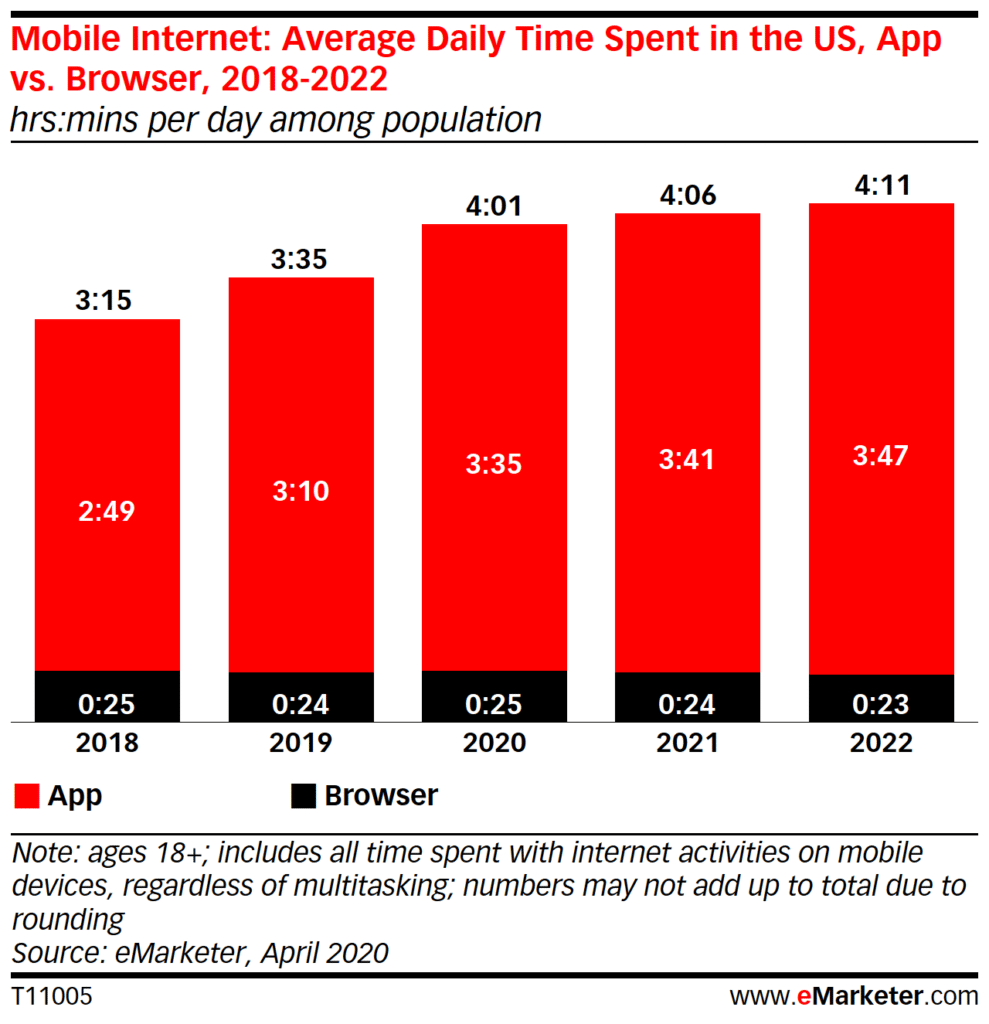Turning Users Into Advocates: 6 Clever Ways to Get User Ratings on Your Mobile App
What is a good app rating worth? Mobile app ratings, reviews and responses are crucial to your app store optimization (ASO) which dictates how visible your app is to potential new users. Customer feedback is a major driver for adoption, and a stream of recent positive feedback reviews is good news for your app click-through rate (CTR) and average ecommerce conversion rates.
Negative reviews, on the other hand, can spell disaster for your mobile app, damaging brand reputation and denting your popularity.
Positive ratings form a snowball effect of increased approval for your mobile app. Consumers want to know they are investing time and data into applications used and enjoyed by others. It’s an effect known as social proof: users prefer products and apps popular with their peers. In fact some of the best referral programs are simple word-of-mouth!
There is safety in numbers, and consumers are far more likely to trust their fellow consumer rather than B2C advertising. When considering a purchase 81% of people hold brand trust as a deal breaker or deciding factor.
Mobile app ratings can surely make or break an up-and-coming app. But what can you do if nobody is leaving any reviews at all?
Developers pulled all-nighters to fix bugs and tweak UX for your hot new mobile product. Marketing efforts saw dozens, if not hundreds, of new downloads and revenue began to trickle in. But when it came to user feedback – pure radio silence.
As it happens, there are a range of ways to generate buzz and secure a healthy stream of mobile app ratings.
Let’s dive in.
- Execute excellent design
How can I improve my mobile app ratings? A common question all Android mobile app developers will find themselves asking sooner or later. Before we look to fancy marketing strategies, it is paramount to finesse the basic design. Mobile apps will not get good ratings unless they perform the way users expect them to and meet established Android design standards.
Fortunately Google Play regularly releases resources to aid developers in reaching quality and usability standards. Whether you are creating a retro arcade-style shoot-em-up game, a navigation tool or an interactive birdwatching guide, every kind of app should contain core material components as part of the user interface.
Mobile apps should also meet WCAG 2.1 standards to avoid falling foul of users with extra accessibility needs. The last thing you want is for all your hard work to end in a spate of negative reviews because users with disabilities cannot use your app.

- Understand your user base
Mobile apps are an extremely popular digital product and annual downloads have increased enormously year-on-year (as depicted in the above graph). Yet mobile app marketers are in a constant battle to prove their app is worth a slice of the storage space pie.
Users do not like to feel forced into downloading an app just to access a deal, and 63% of users in this scenario will delete the app shortly thereafter. You can bet your bottom dollar users are not in a hurry to leave positive feedback on an app they never wanted in the first place.
Therefore, it is crucial to produce a genuinely useful, entertaining, or otherwise indispensable, mobile app. Only loyal fans of your mobile app will be motivated enough to drop positive user ratings onto the Android app store. With significant market research, you can even create brand ambassadors who tell their friends and followers about your useful, beautiful, and well-designed mobile app.
Recently, Walmart created a ‘super app’ to combine their in-store and ecommerce shopping experiences, as well as offer customers the chance to book a vaccination appointment. Walmart customers can benefit from grocery delivery in app as well as contactless mobile payment and in-store navigation.
- Conduct beta testing
Customer feedback is crucial to getting your mobile app seen and downloaded by new users. Another clever way to rack up more positive mobile app ratings is to conduct beta testing. As well as highlighting important flaws in UX, beta testing can also lead to increased popularity for your app as testers organically spread the word to friends, peers and associates.
Before rolling it out to beta testing, it is worth running your app through the gamut of pre-release functional tests. Examples include exploratory testing, trialing the app on various devices and researching any possible ways to improve speed. These days you can hire a mobile application testing company to run such tests and more.
Beta testing is the process of releasing the app to a small group of ‘real world’ users who may or may not know they are the first to access it. As these mobile users are outside of the development team, their feedback is objective as well as honest. Reviews gained from beta users will help the development team optimize the app for even better UX design, bug fixes, and improved features in the next update release.

- Time feedback requests wisely
When taking a driving test, everybody hopes their examiner will be in a great mood when it comes to evaluating our performance. If the sun is out and he ate his favorite sandwich for lunch, chances are our score will be higher, right? But if the examiner’s wife phoned him with bad news, his back ache is flaring up and his line manager gave him a poor performance review, there’s no way anyone is going to get a good exam result that day.
As much as we wish life was fair, the truth is that timing is everything. Hooking the best user ratings can involve some little tricks to tilt the odds in your favor. Mobile apps often include pop-up windows with a prompt for a request for feedback. The key, here, is to initiate this feedback-request-sequence at a moment when the user is having a positive experience and the user is already in a good mood.
How do you know when this happens? Developers should choose a moment in the app user journey when the user is experiencing success. For a mobile game, this would be when the user wins a round of the game. For a dating app, when the user ‘matches’ with another user. For a social media app or ecommerce store, when the user ‘likes’ a post, picture or product. For bitcoin mining applications, a great moment would be when the mining cycle yields a positive result.

- Team up to get the word out
As much as informal methods are convenient and low-cost, sooner or later your company is going to have to consider its PRM strategy to reach larger audiences. Before you go searching ‘what does PRM mean in marketing?’, allow me to explain. Partner relationship management is the process of building connections with relevant companies, influencers, decision-makers, and thought leaders in the same space as you.
When it comes to outreach, planning an affiliate marketing campaign is not a bad place to begin. Cost-effective and highly targeted, an affiliate program for your mobile app could produce excellent ROI driving motivated users to download and rate your latest release.
As such, gaining enthusiastic followers for your mobile app does not need to be complex. Indeed, an example of the easiest affiliate program strategies is to engage dedicated software to outsource the heavy lifting. This allows you to run ad campaigns, set tracking, define audiences, and partner with advertisers and affiliates directly on the platform. One of the greatest benefits of an affiliate SaaS platform is the data analytics provision which is extremely hard to track using a patchwork of non-specialist tools.
- Learn from negative feedback
Everybody makes mistakes – there’s no getting away from that. As scary as receiving critical reviews on your mobile app can seem, it is actually an important learning experience. Negative feedback on your app is essential for your company to learn what it can do better and improve for the future.
Responding to low mobile app ratings and specific criticisms of your app’s design, functionality, bugs, or tendency to crash, will show that your company cares about its user base. After all, a disappointed user is not necessarily a lost customer; a speedy response can entice that person back to give your app another try.
If new users click on your app in the Android store and all they see are a host of negative reviews with no company response at all, you are unlikely to get a bunch of new downloads. For this reason, ignoring negative feedback will likely stall app downloads and effectively stop new user ratings in their tracks.

Get ahead in the app ratings game
Although the road is long from initial idea to launch, mobile app ratings should motivate your team to stay energized. Think about the apps you use on a daily basis and how much they add to your life. Where would we be without journey planner tools, music apps, photo organizers, and puzzle games? Follow the tips above to increase user ratings and watch your app achieve success on the Android market.
Bio:
Sam O’ Brien – Chief Marketing Officer, Affise
Sam O’Brien is the Chief Marketing Officer for Affise—a Global SaaS Partner Marketing Solution. He is a growth marketing expert with a product management and design background. Sam has a passion for innovation, growth, and marketing technology. Sam has also written for sites such as SimplyBook and Marketing Artificial Intelligence Institute. Here is his LinkedIn.

